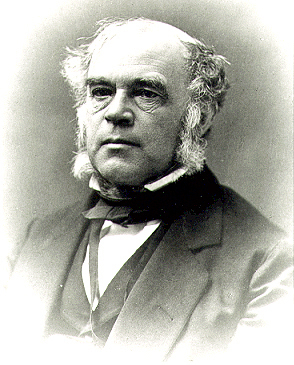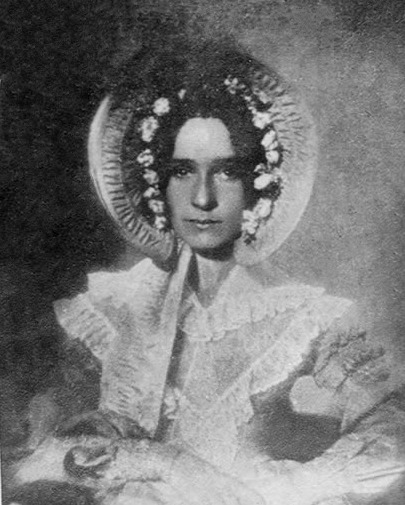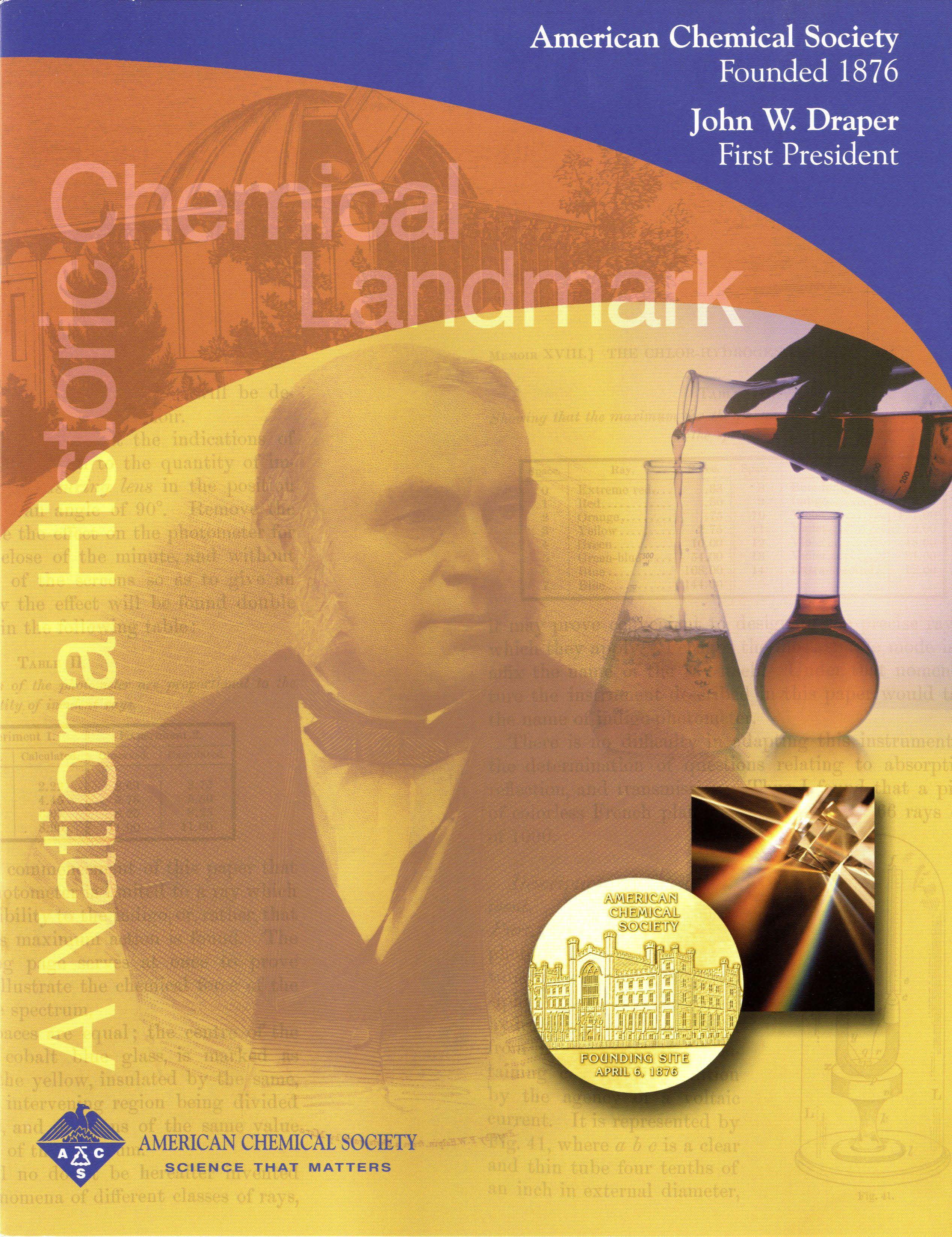John W. Draper and the Founding of the American Chemical Society
Dedicated November 16, 2001, at New York University in New York City, New York, during the 125th anniversary of the founding of the American Chemical Society.
The American Chemical Society, the world’s largest scientific society, celebrated its 125th anniversary in 2001. Founded in 1876 in New York City, the Society now has 186 local sections in all 50 states, international chapters, and 32 technical divisions that bring together scientists with interests ranging from small business to environmental protection.
Contents
Founding of the American Chemical Society, 1876
A wave of euphoria was sweeping across the United States early in 1876 as the countdown to the country’s centennial continued toward July 4. Preliminary celebrations, such as the Centennial of the Battle of Bunker Hill, had already taken place a year earlier. But the keystone event in the celebration of the nation’s centennial birthday would be the massive International Centennial Exhibition in Philadelphia, set to open on May 10. It was a time to reflect back on a tumultuous century of political events. More importantly, it was a time for the United States to take its place on the world stage, showcasing technological achievements that indicated a bright future for American industry.
One of the more unusual events at the exposition was a demonstration by Alexander Graham Bell of a device that allowed the human voice to be transmitted over a wire. Bell had first achieved that feat on March 10, with the famous message to his assistant, Mr. Watson. A month later, as Bell was preparing his equipment for the Philadelphia exposition, a small group of chemists was quietly meeting on April 6 at the University Building of what is now New York University. In contrast to the forthcoming centennial exposition, this meeting attracted no attention from the media, and the only account of its transactions occurred in an obscure chemical journal. That night its exhausted organizer would write simply in his dairy, “Organization of Chem. Society in eveg.”
A few of those present at New York University that evening had caught the centennial fever several years earlier. In the summer of 1874 they made a pilgrimage to join some 70 other chemists in the small Pennsylvania town of Northumberland to pay their respects at the grave of Joseph Priestley, the English theologian and natural scientist who had discovered oxygen exactly 100 years earlier, on August 1, 1774. They also celebrated the first 100 years of modern chemistry, favorably comparing what chemists and chemistry in the United States had achieved to what had transpired in Europe, where modern chemistry was born.
Noting that chemists were not yet formally organized, the New York Daily Graphic reported that “if the chemists who were at Northumberland … had combined in certain definite proportions to accomplish what really the obvious purpose of their merely mechanical mixture … the world would have cause to rejoice in their synthesis,” for “hitherto America had done but little for the science, each chemist being an isolated molecule giving but little show of affinity for others.”
The camaraderie of the Northumberland meeting did prompt some of those present to join the American Association for the Advancement of Science, a 28-year-old organization that included all sciences under the same umbrella. However, the explosive growth of chemistry, as demonstrated by the centennial review at Northumberland, only reinforced the notion that chemistry could no longer be contained in a general science setting. In reacting to that need, the New York group, led by Professor Charles F. Chandler of the Columbia School of Mines, founded the American Chemical Society at that April 6, 1876, meeting at New York University.
Chandler, like many of his chemical colleagues, had received his advanced chemical education in Europe, and he came prepared to form an organization patterned after similar European societies. Chandler knew, however, that this society would be a decidedly American venture, finally giving American chemists a cause to “rejoice in their synthesis.”
The new society, Chandler said, would “prove a powerful and healthy stimulus to original research, ... would awaken and develop much talent now wasting in isolation, … [bring] members of the association into closer union, and ensure a better appreciation of our science and its students on the part of the general public.”
After completing a formal vote for organization and the adoption of a constitution, the New York University participants selected officers. To many, the obvious choice for president would have been Chandler, who was well known in New York because he served as the city’s health commissioner. The presidency would have been a reward for his guiding genius in bringing the American Chemical Society into existence. But Chandler had other ideas. Although its headquarters would be in New York, the Society was planned as a national organization. That meant it needed a president whose fame and reputation were known to the general public, would attract new members throughout the country, and would secure acceptance by established societies in Europe. In Chandler’s mind there was only one person who was known to scientist and layman alike, both in the United States and abroad. That person was New York University Professor John William Draper, who at age 65 had an impressive list of achievements.
John W. Draper: Chemist, Philosopher and Historian
Physician, chemist, physicist, photographer, inventor, teacher, historian, and social philosopher, Draper was a true Renaissance man. Born in England in 1811 but educated at the University of Pennsylvania, where he received his M.D. degree in 1836, Draper began his academic career at Hampden-Sydney College in Virginia where he was professor of chemistry and natural philosophy. Here he quickly established himself as an experimentalist in photochemistry, exploring the effect of sunlight on plants and on the stability of various substances, including silver halide salts. Draper’s interest in photography grew from this latter work because he had discovered how to produce images of objects on sensitized paper but was unable to make them permanent.
Draper accepted an appointment in the medical school at New York University in 1839. Almost at the same time that he arrived in New York, the details of Frenchman Louis Jacques Mande Daguerre’s new photographic process, as published in the London Globe, arrived on a British ship. Draper, now able to fix his photographic images, took one of the first photographic portraits of a human subject, something that Daguerre considered impossible because of the long exposure times required. Draper was the first to photograph the moon and was instrumental in introducing photography into scientific investigations. As a result, Draper figures prominently in most books on the history of photography. While his expertise and fame positioned him to capitalize on commercial opportunities in the field, he did not follow that path. Nor did he pursue financial opportunities that would have been available to him through patents or other activities.
At New York University, Draper continued his work on photochemistry, establishing a chemical law that bears his name and developing the tithonometer, the first device that allowed scientists to measure the amount of light absorbed in a chemical reaction. At the same time in 1876 that Bell was talking to Watson on his new “telephone,” Draper was receiving the distinguished gold and silver Rumford Medals from the American Academy of Arts and Sciences in recognition of his original research in radiant energy. Draper was only the eighth recipient in 80 years to receive this honor.
Draper’s first book was a chemistry text published in 1846. When his Human Physiology, Statical and Dynamical appeared in 1856, it received immediate recognition as an outstanding textbook. In this text, Draper adhered to a strictly chemical basis rather than using the dominant vital force theory, whose proponents claimed that living systems contained a nonchemical force that gave them life. The book was translated into several foreign languages and established Draper’s authority as a chemist in an area of medicine that had previously been taught by physicians with little knowledge of chemistry.
Convinced that the “movement of humanity is like the movement of material bodies,” Draper became a philosopher and historian in the latter part of his career, developing his views in four major literary works. The publication of A History of the Intellectual Development of Europe in 1863 was acclaimed by European critics as one of the very highest pinnacles of intellectual achievement. This was followed two years later by Thoughts on the Future Civil Policy of America, a book that suggested the ways that natural laws, such as climate, might affect the fate of America after the Civil War. This work received considerable attention from officials in Washington, and as a result, when Draper began to write his History of the American Civil War, he received generous assistance from many of the participants, including Secretary of War Edwin M. Stanton, who supplied many official documents, and Union general William T. Sherman, who provided extensive correspondence and assisted in the final evaluation of the manuscript for historical accuracy. The three volumes published between 1867 and 1870 constituted one of the first histories to appear about that great conflict and for some time were considered to be the most authoritative.
Draper’s last major and most controversial work, History of the Conflict of Religion and Science, went through 20 editions in the first ten years after it was published in 1874 and was translated into nine languages. Draper’s negative attitude towards the Roman Catholic Church led the Vatican to place this book on the Index Librorium Prohibitorium (Index of Forbidden Books) in September of 1876. It continues to be an important work and was last reprinted in 1998.
John W. Draper: First President of the ACS
It is not surprising, therefore, that Chandler would turn to John Draper as the first president of the American Chemical Society. As a fellow chemist said of Draper in 1874, “few men of science now living in America have been so long and so favorably known.” Predicting the success of the enterprise “already ensured,” Chandler, on April 11, 1876, invited Draper to become the first president. “It is the unanimous wish of the members,” he said. “Your name will be a tower of strength to us.” Draper accepted, but told Chandler his health would prevent his active participation in the Society’s affairs. In response, Chandler assured Draper that “we will see that you are not burdened with time consuming duties, and will make it very pleasant for you.”
For the most part, the American Chemical Society used Draper’s name and reputation more than they depended on his actual participation in meetings and programs. Draper never chaired a monthly meeting during his presidency in 1876. When the American Chemical Society sponsored a dinner for the foreign chemists attending the Centennial Exhibition in Philadelphia in June 1876, the invitation went out over Draper’s name, even though Chandler knew that Draper would be unable to attend.
Draper did participate in a gala event held on November 16, 1876, at the newly opened Chickering Music Hall in New York City. The event, prominently advertised and open to the public, was billed as Draper’s inaugural address as the first president of the American Chemical Society even though his term of office ended in December and his replacement for 1877 had already been selected. In covering the event, the New York Times reported that the society “felt that it could come up before the public with conscious pride and challenge the attention of scientific men to its objects and principles.”
Using the title Science in America, Draper began optimistically, “The field of nature is ever widening before us,” and “the harvest is becoming more abundant and tempting, the reapers are more numerous. Each year the produce that is garnered exceeds that of the preceding. In all directions there is good hope for the future.” Stressing that the progress of science depended on two elements—colleges and scientific societies—Draper enthusiastically regaled his audience with stories of chemistry. For example, referring to the recent discovery of a new element in the sun but then unknown on earth, Draper remarked, “I often look at the bright yellow ray emitted from the chromosphere of the sun by that unknown element, Helium, as the astronomers have ventured to call it. It seems trembling with excitement to tell its story.”
Draper concluded his lengthy oration with a challenge to his chemical colleagues. “Let us continue our labor unobtrusively, conscious of the integrity of our motives, conscious of the portentous change which is taking place in the thought of the world, conscious of the irresistible power which is behind us! ... Let us deliver unflinchingly to others the truths that Nature has delivered to us.”
It was on this note that the American Chemical Society began, embarking on a long history of growth and achievement. The small band of 35 chemists that met on April 6, 1876, has grown to more than 163,000 chemists and chemical engineers who continue to read the book of Nature just as John Draper urged them to do.
William Henry Nichols and the Founding of the American Chemical Society
Even though he was only 24 years old when he attended the organizational meeting of the American Chemical Society on April 6, 1876, William Henry Nichols was already a successful chemical entrepreneur. Nichols had studied with John Draper at New York University, where Draper was involved in classroom instruction continuously for 42 years. Draper’s lectures, according to one biographer, were considered “clear in statement, fresh and striking in their views, and lively, poetic and witty, as well as instructive, well fitted to awaken the student’s enthusiasm.” Nichols, who would become chairman of the board of the Allied Chemical & Dye Company in 1920, was so impressed with Draper that he gave several million dollars to the university for the 1922 construction of a chemistry building on the University Heights campus in the Bronx.
Nichols also played a pivotal role in the April 6 organizational meeting. When the motion to form the American Chemical Society was made, three speakers immediately argued against the motion, claiming other organizations would serve the purpose better, at least for the time being. It was Nichols who finally spoke forcefully and positively, thus assuring the passage of the vote and the formation of the society. “We did not come here expecting to find a society ready formed, with a library and a fine building,” Nichols said. “We have much intelligence assembled here, and that is much better than a library. Let us begin this society small, let it do its work well, and it will undoubtedly grow.”
Further Reading
- ACS President: John W. Draper (American Chemical Society)
- ACS President: William H. Nichols (American Chemical Society)
- Across the Spectrum (Chemical Heritage Foundation, Chemical Heritage Magazine)
Landmark Designation and Acknowledgments
Landmark Designation
The American Chemical Society designated John W. Draper and the founding of the American Chemical Society as a National Historic Chemical Landmark in a ceremony on November 16, 2001, at New York University in New York City, New York. The text of the plaque commemorating the landmark reads:
On this site, 35 chemists formed the American Chemical Society, intending to stimulate original research, awaken and develop talent throughout the United States, provide fellowship, and ensure a better appreciation of the science by the general public. The Society’s first president, New York University Professor John W. Draper, was noted for his pioneering work in photography and photochemistry, as well as his writings in history and education. In his inaugural address, Draper challenged his chemical colleagues to “deliver unflinchingly to others the truths that Nature has delivered to us.” In the 125 years since its founding, the Society has grown to more than 163,000 members.
Acknowledgments
Adapted for the internet from “American Chemical Society Founded 1876, John W. Draper First President,” produced by the National Historic Chemical Landmarks program of the American Chemical Society in 2001.
Back to National Historic Chemical Landmarks Main Page.
Learn more: About the Landmarks Program.
Take action: Nominate a Landmark and Contact the NHCL Coordinator.




